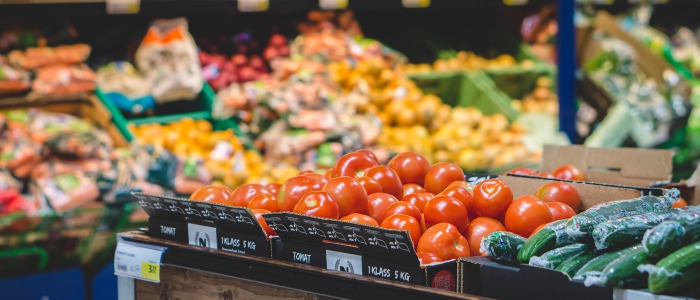30% of all food produced worldwide occuring along the value-added chain “from farm to fork” is wasted every year. This corresponds to a staggering 1.3 billion tonnes. When it comes to fruit and vegetables, the loss rate is particularly high, amounting to almost 50%. It is critical that this amount is reduced to meet the food requirements of an ever-growing global population.
The most frequently used method was the First In – First Out (FIFO) method. As far as possible, stocks stored first are used first. However, perishable foods such as fruit and vegetables are less well suited to this procedure, since just because something was harvested earlier, does not mean that it will stay fresh longer. We need to understand exactly how foods behave along the value-added chain and how they react to outside influences. A better method would be First Expired – First Out (FEFO). But this is a still complex matter as the quality of fruit, vegetables and plant products comprises many characteristics, such as colour, texture and taste. It also depends on specific product properties, such as the sugar content or the cell wall structure.
In general, quality always diminishes over time. Unfortunately, post-harvest handling does not improve the quality of the products which means that product losses can only be delayed.

The quality of easily perishable foods is therefore a dynamic variable. It changes over time at different speeds. Physiological, physical, microbial and chemical processes are among the factors that initiate ripening processes and are jointly responsible for food losses. However, if there is targeted intervention in the storage, packaging and transport conditions, these processes can be inhibited and/ or delayed.
So, the challenge is to understand what are the important factors that can be monitored and controlled to ensure product quality is prolonged and managed. The following factors along the supply chain, should be considered carefully:
Temperature
Temperature influences enzymatic and non-enzymatic processes in fresh and processed products. Low storage and transport temperatures extend the shelf life of most products. There are some exceptions: Tropical fruits, for example, are sensitive to low temperatures that can influence on their quality. In order to ensure the shelf life and quality of the products, a suitable (usually low) temperature is set during the entire transport.
Ideally, the cold chain starts immediately after harvesting or slaughtering and does not end until the food is on the consumer’s fork.
Scientists have demonstrated repeatedly that interruptions to the cold chain can have dramatic effects on food quality and losses.
Relative humidity
Mechanical refrigeration removes humidity from the air and this may cause the appearance of the product to be affected by shrinkage, wilting and weight loss. To minimize water loss, it is necessary to ensure proper packaging or additional humidification, as well as refrigeration. But there is a fine balance as, if humidity is too high, microbial decay may begin. The constant monitoring of this measurement parameter is essential during transport and storage.
O2 and CO2 concentration
After the harvest or minimal processing, many fresh foods continue the active metabolic process, to keep the tissue intact. The food’s metabolic process can be controlled by exerting appropriate influences on the O2 and CO2 content in the storage environment. If the O2 content is reduced and the CO2 content increased, the metabolic rate is taken down to the minimum level and the shelf life is thus increased. In addition, a higher CO2 content inhibits microbial growth.
Ethylene
Ethylene is a phytohormone which specific fruit and plants react to. This means it is also an indicator of the ripening process of fruits, amongst other things. If climacteric fruits such as bananas are exposed to a specific ethylene concentration, their ripening process starts. The ethylene concentration inside a container for climacteric fruits therefore correlates directly with its degree of ripeness, which means it is of significant importance in terms of quality monitoring.
Putting it all together in a usable system
Using the factors above, shelf life models have been developed to predict the changes in quality which products face during processing or transport. This information can then be implemented in warehouse management systems to assist in shifting the emphasis from the classic First In – First Out (FIFO) to the First Expired – First Out (FEFO) approach. An automated system of this kind requires an integrated monitoring approach. This means that experts from the sensor systems, communication sciences, predictive biology and food technology fields have to work together with transport companies and supply chain managers. But it seems worth the effort.
Accurate temperature management and monitoring, along with application of the FEFO method, can significantly reduce the loss rate right along the logistics chain. Provided temperature and quality monitoring is done at a pallet level using appropriate sensor-based monitoring, studies have shown that this approach can lead to savings of between 8 and 15%, depending on the type of goods.
The benefits of the FEFO principle
- Lower losses of products during transport
- Lower costs for producers
- Reduced environmental pollution, because there is no longer any transport of decaying goods
- The variance of the quality of the goods is reduced, which enables customers to be provided with higher and more consistent quality
- Less food is thrown away, because it is fresher when it reaches the customer
- More profit for all those involved in the process chain
For expert support on keeping your food fresh: https://www.testo.com/en-ZA/food/farm-to-fork






